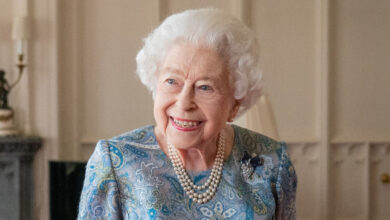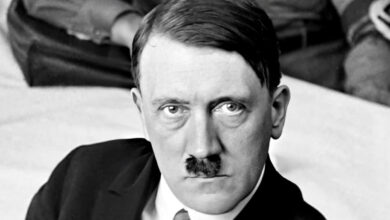
Richard Nixon is one of those historical figures who most people only know one thing about and for him that, of course, is Watergate. However, this political figure had significantly more notable occurrences in his life than simply that one incident.
Richard Milhous Nixon was born on 9 January 1913. He was born into a poor southern California family in a home that had been built by his father and he was the second of five brothers. Nixon’s parents were staunchly religious with his mother being a Quaker and his father a Methodist who had converted to the Quaker faith. With these influences, the Nixon family was one that did not believe in dancing, swearing or the consumption of alcohol. Nixon’s family were incredibly poor and so life was difficult, especially when the family farm failed in 1922, leading to a move to Whittier, a part of California that had been settled by many Quaker families.
Richard was no stranger to tragedy even in his teenage years as in 1925, his younger brother Arthur died after becoming sick at just seven years old. By the time he was twenty, he had lost a second brother when in 1933 his older brother Harold died of tuberculosis.
Despite the early difficulties though, Richard would show some early promise of the greater things to come in his life and he was even elected class president in 8th grade. The family was concerned about their sons and due to Richard’s older brother Harold having become disillusioned with the rules of his family and living a reprobate lifestyle relatively speaking, they decided to send Richard to Fullerton Union High School believing it would be a far better school for him to attend.
During his time in high school, the young Richard Nixon showed extreme promise as a student. He was an excellent debater, regularly winning championships even though he only had minimal training in public speaking. His teacher is said to have remarked, “don’t shout at people, talk with them.” Nixon took the lesson to heart and sought to use it throughout his political career.
Richard Nixon went on to do well in college, continuing to regularly win debates and even assisting in the founding of a new chapter of the Orthogonian Society as he had been snubbed by many of the other fraternities at the school due to his low social status and being from a poor background.
After graduating from college, he went on to attend Duke University School of Law becoming one of its top students which led to him being awarded scholarships due to his high marks. He had initially wanted to join the FBI but budget cuts at the bureau prevented it, and so he joined the California bar in 1937
The following year, Richard Nixon was cast in a community production of The Dark Tower and played opposite a young woman called Thelma Ryan, who was known as Pat. The two eventually started dating and after two years Pat accepted his marriage proposal. They were married on 21 June 1940 and went on to have two children, both girls called Tricia and Julie.
Even though he was a Quaker by birth, which would have excluded him from the draft if he had so wished, he instead sought to join the military and was successfully appointed as a lieutenant junior grade in the U. S. Naval Reserve on 15 June 1942. He moved around a lot within the navy and worked in several different areas including in a support capacity in the U. S. Pacific theatre. He reached the rank of lieutenant commander before being relieved of active duty on 10 March 1946. He was promoted to commander on 1 June 1953 and eventually retired from the U. S. Naval Reserve on 6 June 1966.
Shortly after the war, the trajectory of life continued onward and upward for Nixon, even winning a highly contentious congressional election and serving as a congressman between 1947 and 1953. His strong campaigning and debate skills helped catch the eye of those in the Senate who were looking for the right candidate for the position of Vice President to Dwight D. Eisenhower. After some discussion, the young Richard Nixon’s name was put forward and he went on to serve as Vice President of the United States between 1953 and 1961.
Despite a fairly successful early career, Richard Nixon lost his first presidential election bid against the young John F. Kennedy and he even briefly considered leaving politics entirely. However, due to his tireless work and the fact that he was one of the few who escaped unscathed from a reshuffling of the Republican party, Richard Nixon once again found himself in a promising position to run for president, and this time he won, taking office as the 37th President of the United States on 20 January 1969.
There were several notable elements to Richard Nixon’s presidency. He was the first U. S. President to visit China after the Communists took power. He ended the United States’ involvement in the Vietnam War and changed the Post Office into the version known today. He implemented an affirmative action plan designed to provide access to education and employment, especially for racial minorities and women. He also created the Environmental Protection Agency and presided over the Apollo 11 moon landing during which Neil Armstrong became the first man to step foot on the moon.
Unfortunately though, after a string of political and foreign successes, Richard Nixon was eventually brought down by the now-infamous Watergate scandal. It stemmed from actions, including harassment and the bugging of political opponents, taken either by the president or by his administration to help secure re-election. The final straw came about when five men broke into the Democratic National Committee headquarters at the Watergate complex in Washington D. C. and it was shown the men were linked to Nixon’s administration and that Nixon himself assisted in the cover-up.
As a result, all political support for Richard Nixon evaporated and he resigned from the presidency on 9 August 1974, the only President of the United States ever to do so. Even though it was unpopular with the country, his successor, President Gerald Ford, stuck to tradition and granted Nixon a pardon for all potential crimes that may have been committed, even though Nixon insisted that he had not committed any. Ford even visited Nixon in hospital in 1974 when he had surgery for phlebitis.
By the time 1975 rolled around Richard Nixon was eager to get back to work and maintained an office at a Coast Guard station near his home. However, his expenses, which included hefty lawyers’ fees drove him close to bankruptcy with him claiming at one point that he only had $500 in the bank. However, as a former president and especially one with such a scandal-ridden and dubious reputation, the media ate up every chance offered to them for interviews. One notable series of sit-down interviews, with Britain’s talk show host David Frost, made for compelling television and helped to shore up Nixon’s finances due to the $600,000 he received for going ahead with them.
Nixon continued the active life that would become synonymous with retired presidents, as he continued to give interviews, meet dignitaries all over the world and attend speaking engagements throughout the 1980s and into the 1990s.
Richard Nixon’s wife Pat died on 22 June 1993 from emphysema and lung cancer and less than a year later Richard Nixon himself suffered a severe stroke whilst preparing for dinner at his home in New Jersey.
He died four days later on 22 April 1994 at the age of 81. President Bill Clinton gave a eulogy at his funeral which took place five days later, and it was also attended by four other former U. S. Presidents, Gerald Ford, Jimmy Carter, Ronald Reagan and George H. W. Bush.




